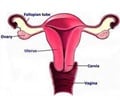The use of hormone replacement therapy can help protect postmenopausal women against the development of peripheral artery disease, a new study suggests.

"This data has important implications with regard to a possible protective effect of HRT on atherosclerotic conditions, particularly in patients at higher risk for these conditions due to medical co-morbidities," said Caron B. Rockman, vascular and endovascular surgeon.
"Our initial task was to gather information from a prospective database of patients who underwent vascular screening to identify them as postmenopausal. A questionnaire was used to determine their use of HRT. Peripheral artery disease was noted if their ankle-brachial index was less or equal to 0.9," added Rockman.
Analysis was performed on 847,982 postmenopausal women; 433,178 (51.1 percent) reported having used HRT. Despite the increased prevalence of several atherosclerotic risk factors among women who used HRT, researchers found that they were significantly less likely to have PAD (3.3 percent vs. 4.1 percent). Multivariate analysis confirmed that HRT was independently associated with a decreased risk of PAD (OR 0.8, 95 percent CI 0.78-0.82). In addition, HRT patients were less likely to have diabetes (8.6 percent vs. 10.1 percent).
"The significant effect of HRT on the prevalence for PAD was maintained in the patients with existing atherosclerotic risk factors," added Rockman, "and in postmenopausal women with either a smoking history, hypertension, hypercholesterolemia, or diabetes, the odds ratio of HRT use with regard to PAD remained 0.8."
This analysis of nearly 850,000 post-menopausal women clearly demonstrates an association between the use of hormone replacement therapy and a lower risk of having peripheral arterial occlusive disease.
Advertisement
Source-ANI













